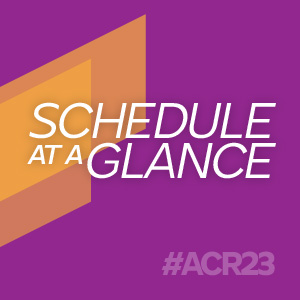Poster Session C
Sjögren’s syndrome
Session: (L01–L14) Late-Breaking Poster
L10: Dazodalibep, a CD40L Antagonist, in a Phase 2, Randomized, Double-Blind, Placebo-Controlled, Crossover Trial of Subjects with Sjögren’s Disease Having Unacceptable Symptomatic Burden but Limited Extraglandular Organ Involvement
Tuesday, November 14, 2023
9:00 AM - 11:00 AM PT
Location: Poster Hall
- ES
Eugene St.Clair, MD
Duke University Medical Center
Durham, NC, United StatesDisclosure information not submitted.
Late-Breaking Poster Presenter(s)
E. William St. Clair1, Liangwei Wang2, Ilias Alevizos2, William A. Rees2, Alan N. Baer3, Wan-Fai Ng4, Ghaith Noaiseh5 and Chiara Baldini6, 1Department of Medicine, Duke University Medical Center, Durham, NC, USA, Durham, NC, 2Horizon Therapeutics plc, Rockville, MD, 3Department of Medicine, Johns Hopkins University School of Medicine, Baltimore, MD, USA, Baltimore, MD, 4Translational and Clinical Research Institute, Newcastle University, Newcastle, United Kingdom, 5Division of Allergy, Clinical Immunology and Rheumatology, Department of Medicine, University of Kansas, Kansas City, KS, USA, Kansas CIty, KS, 6Department of Clinical and Experimental Medicine, Rheumatology Unit, University of Pisa, Pisa, Italy
Background/Purpose: Dazodalibep (DAZ) is a non-antibody fusion protein that acts as a CD40L antagonist and blocks costimulatory signals between immune cells, including T cells, B cells, and antigen-presenting cells. Previously, we reported that the primary endpoint, the change from baseline to Day 169 in the EULAR Sjögren's Syndrome Patient Reported Index (ESSPRI), was achieved in the population of subjects with unacceptable symptomatic burden but limited extraglandular organ involvement (NCT04129164).1 Here, we report the efficacy and safety of DAZ therapy in this population through the crossover period of the study.
Methods: We performed a randomized, double-blind, placebo-controlled, crossover study to evaluate DAZ therapy in adult subjects with Sjögren's Disease having an ESSPRI score ≥ 5 and EULAR Sjögren's Syndrome Disease Activity Index score < 5. Eligible subjects were randomized 1:1 to receive intravenous DAZ 1500 mg or PBO Q2W x 3 doses, and then Q4W x 4 additional doses (Stage I). Starting on Day 169, subjects initially randomized to DAZ transitioned to PBO Q4W x 5 doses (DAZ-PBO) and subjects randomized to PBO were switched to DAZ Q4W x 5 doses (PBO-DAZ); all were then followed for 12 weeks (Stage II).
Results: A total of 109 eligible subjects were randomized (DAZ, N=54; PBO, N=55), with 102 (93.6%) completing Stage I and 94 (86.2%) completing Stage II. In the PBO-DAZ group, the change from baseline in ESSPRI total score (LS mean ± SE) improved from −0.5 ± 0.2 at Day 169 to −1.3 ± 0.3 at Day 365. In the DAZ-PBO group, the change from baseline in ESSPRI total score achieved during Stage I was sustained during the crossover period through Day 365 (Day 169: −1.8 ± 0.3; Day 365: −1.9 ± 0.3). In the PBO-DAZ group, the proportion of subjects achieving an ESSPRI response (≥1 point or ≥15% improvement in ESSPRI total score) at Day 169 was 32.7% (18/55) and continued improvement was observed during the crossover period (Day 365: 50.0% [26/52]). In the DAZ-PBO group, the proportion of subjects achieving an ESSPRI response at Day 169 was 66.7% (36/54) and this treatment effect was largely sustained through the crossover period (Day 365: 57.1% [28/49]). During Stage II, the subjects in the PBO-DAZ group exhibited improvement in the Functional Assessment of Chronic Illness Therapy-Fatigue score, and Patient's Global Impression of Severity score during the crossover period.
In Stage II, 66 of 101 subjects reported an AE (DAZ-PBO: 32 [65.3%]; PBO-DAZ: 34 [65.4%]) and the majority were mild/moderate in severity. Two SAEs were reported in two subjects in the DAZ-PBO group (urinary tract infection, invasive ductal breast carcinoma), and one SAE was reported in the PBO-DAZ group (atrial flutter). One subject in the PBO-DAZ group discontinued the study during Stage II due to an AE (rash).
Conclusion: The results during Stage II provide further evidence of the clinical efficacy of DAZ in Sjögren's disease and support the primary endpoint result. DAZ was generally safe and well tolerated in Stage II, although larger trials of DAZ therapy for this indication are warranted to further explore its safety profile and confirm its clinical efficacy.
References:
1. St. Clair EW et al. Ann Rheum Dis 2023; 82(Suppl 1):201.
.jpg)
.jpg)
Dazodalibep, a CD40L Antagonist, in a Phase 2, Randomized, Double-Blind, Placebo-Controlled, Crossover Trial of Subjects with Sjögren’s Disease Having Unacceptable Symptomatic Burden but Limited Extraglandular Organ Involvement
E. St. Clair: Bristol-Myers Squibb (BMS), 2, CSL Behring, 2, Horizon Therapeutics, 2, Resolve Therapeutics, 2, Sonoma Biotherapeutics, 2, UpToDate, 9; L. Wang: Horizon Therapeutics, 3, 11; I. Alevizos: Horizon Therapeutics, 3, 11; W. Rees: Horizon Therapeutics, 3, 11; A. Baer: Bristol-Myers Squibb (BMS), 2, iCell Gene Therapeutics, 2; W. Ng: Abbvie, 5, Argenx, 2, GlaxoSmithKlein (GSK), 5, Janssen, 2, Novartis, 2, Resolve Therapeutics, 2, Sanofi, 2; G. Noaiseh: Novartis, 2; C. Baldini: GlaxoSmithKlein (GSK), 2, Sanofi, 2.
Background/Purpose: Dazodalibep (DAZ) is a non-antibody fusion protein that acts as a CD40L antagonist and blocks costimulatory signals between immune cells, including T cells, B cells, and antigen-presenting cells. Previously, we reported that the primary endpoint, the change from baseline to Day 169 in the EULAR Sjögren's Syndrome Patient Reported Index (ESSPRI), was achieved in the population of subjects with unacceptable symptomatic burden but limited extraglandular organ involvement (NCT04129164).1 Here, we report the efficacy and safety of DAZ therapy in this population through the crossover period of the study.
Methods: We performed a randomized, double-blind, placebo-controlled, crossover study to evaluate DAZ therapy in adult subjects with Sjögren's Disease having an ESSPRI score ≥ 5 and EULAR Sjögren's Syndrome Disease Activity Index score < 5. Eligible subjects were randomized 1:1 to receive intravenous DAZ 1500 mg or PBO Q2W x 3 doses, and then Q4W x 4 additional doses (Stage I). Starting on Day 169, subjects initially randomized to DAZ transitioned to PBO Q4W x 5 doses (DAZ-PBO) and subjects randomized to PBO were switched to DAZ Q4W x 5 doses (PBO-DAZ); all were then followed for 12 weeks (Stage II).
Results: A total of 109 eligible subjects were randomized (DAZ, N=54; PBO, N=55), with 102 (93.6%) completing Stage I and 94 (86.2%) completing Stage II. In the PBO-DAZ group, the change from baseline in ESSPRI total score (LS mean ± SE) improved from −0.5 ± 0.2 at Day 169 to −1.3 ± 0.3 at Day 365. In the DAZ-PBO group, the change from baseline in ESSPRI total score achieved during Stage I was sustained during the crossover period through Day 365 (Day 169: −1.8 ± 0.3; Day 365: −1.9 ± 0.3). In the PBO-DAZ group, the proportion of subjects achieving an ESSPRI response (≥1 point or ≥15% improvement in ESSPRI total score) at Day 169 was 32.7% (18/55) and continued improvement was observed during the crossover period (Day 365: 50.0% [26/52]). In the DAZ-PBO group, the proportion of subjects achieving an ESSPRI response at Day 169 was 66.7% (36/54) and this treatment effect was largely sustained through the crossover period (Day 365: 57.1% [28/49]). During Stage II, the subjects in the PBO-DAZ group exhibited improvement in the Functional Assessment of Chronic Illness Therapy-Fatigue score, and Patient's Global Impression of Severity score during the crossover period.
In Stage II, 66 of 101 subjects reported an AE (DAZ-PBO: 32 [65.3%]; PBO-DAZ: 34 [65.4%]) and the majority were mild/moderate in severity. Two SAEs were reported in two subjects in the DAZ-PBO group (urinary tract infection, invasive ductal breast carcinoma), and one SAE was reported in the PBO-DAZ group (atrial flutter). One subject in the PBO-DAZ group discontinued the study during Stage II due to an AE (rash).
Conclusion: The results during Stage II provide further evidence of the clinical efficacy of DAZ in Sjögren's disease and support the primary endpoint result. DAZ was generally safe and well tolerated in Stage II, although larger trials of DAZ therapy for this indication are warranted to further explore its safety profile and confirm its clinical efficacy.
References:
1. St. Clair EW et al. Ann Rheum Dis 2023; 82(Suppl 1):201.
.jpg)
Adjusted mean change from baseline in ESSPRI total score.
.jpg)
Most frequently reported treatment-emergent AEs occurring in ≥5% of subjects.
Dazodalibep, a CD40L Antagonist, in a Phase 2, Randomized, Double-Blind, Placebo-Controlled, Crossover Trial of Subjects with Sjögren’s Disease Having Unacceptable Symptomatic Burden but Limited Extraglandular Organ Involvement
E. St. Clair: Bristol-Myers Squibb (BMS), 2, CSL Behring, 2, Horizon Therapeutics, 2, Resolve Therapeutics, 2, Sonoma Biotherapeutics, 2, UpToDate, 9; L. Wang: Horizon Therapeutics, 3, 11; I. Alevizos: Horizon Therapeutics, 3, 11; W. Rees: Horizon Therapeutics, 3, 11; A. Baer: Bristol-Myers Squibb (BMS), 2, iCell Gene Therapeutics, 2; W. Ng: Abbvie, 5, Argenx, 2, GlaxoSmithKlein (GSK), 5, Janssen, 2, Novartis, 2, Resolve Therapeutics, 2, Sanofi, 2; G. Noaiseh: Novartis, 2; C. Baldini: GlaxoSmithKlein (GSK), 2, Sanofi, 2.



